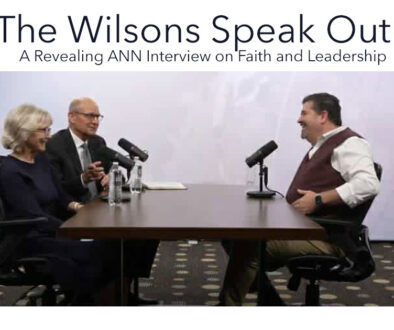Churches Filling with Ethnic Members Not Necessarily a Sign of Health
By Danny Bell, November 5, 2013
It’s becoming more frequent. Churches that were once struggling and apparently dying are now being revived as a steady stream of recent immigrants floods into Australia and into our pews. Most of these immigrants are from countries where religion is part of their everyday life, not just something done on weekends. Many are also fleeing religious persecution, and upon arriving in countries like Australia, they quickly create small communities, putting down roots wherever they find acceptance and entry into religious settings.
Because of the deep religiosity of these cultures, local churches offer a connection to the way of life they left and seek to regain. The difficult circumstances of their migration makes them easier targets for religious groups as their needs are great; the humanitarian arm of churches is a net that’s getting results. These new Australians are very appreciative and often overwhelmed by the help provided. Anyone offering even basic assistance could be seen as angelic in contrast to the help they received in their own countries.
Many Australian churches that have had years of steady decline are now recipients of these families, welcoming them with open arms. The church is filled with people of different races, and there is a new buzz as they call the once declining local church home. There is a feeling of optimism accompanied by a heightened sense of achievement as this is the best thing that has happened to the church in decades. As church numbers swell, God seems to be blessing, and the church is fulfilling its mission in the community. Or is it?
Nobody would deny that souls being reached in marginalised cultures is a cause for celebration. It’s a positive thing that people from other countries find refuge in our churches. God is always pleased when people are saved and find community. These increases are something to be happy about, but there is an underlying concern that we may not have thought about, or indeed want to.
Let me clarify. The first illustration shows a community demographic where the immigrant ethnicity is at 20 percent, the nationals (those born in Australia) at 70 percent, and the indigenous are at 10 percent. The other illustration shows a church that operates in that same community but does not reflect the same percentages in attendance. The church may have a healthy number of immigrants, but it has failed in its responsibility to reach all of its community as reflected in the national and indigenous percentages.
Reaching national and indigenous people is an understandable challenge in Australia. The issue is, however, that when a church suddenly grows by way of immigrants seeking community, it feels like things are looking up—and they are—for immigrants. The problem is they are not looking up for the missing demographic. Churches that are undergoing these changes may feel a sense of God’s blessing as they ride a boom of new ethnic influx. The reality is, however, that the larger unreached native Australian percentage may be forgotten amid multicultural success stories.
It is also apt to point out that many churches do target specific cultures and grow diverse communities with success. However, if there is no other church in that community catering to nationals or indigenous groups, who are equally important, then they may become casualties in a church that has neglected its duty to be a saving vessel for all cultures.
As Paul states:
A well-balanced church should reflect as close as possible the same percentages of the community it serves. If it doesn’t, there are cultures and classes of people it is not reaching, people who consequently may not be receiving the gospel.
There is a typical response to this data when it is presented to churches. Many are asking, “Why make it an issue? Churches are growing, and if Australians don’t like what we are offering, it’s their choice.”
This disturbing response not only hints at a state of unwillingness to seriously reach Australians with the type of outreach they need, but it casts the blame for lack of attendance on them for not being there. This uncaring and unchristian attitude towards missing nationals is one of the reasons why many churches have turned multinational.
 An Australian study on religious beliefs showed the preference to “just believe” exists more in immigrants who strongly agreed that we shouldn’t question religious beliefs, as opposed to those born in Australia who were more undecided in their opinion (See inset: NCLS, Attitudes Towards Belief, 2009).
An Australian study on religious beliefs showed the preference to “just believe” exists more in immigrants who strongly agreed that we shouldn’t question religious beliefs, as opposed to those born in Australia who were more undecided in their opinion (See inset: NCLS, Attitudes Towards Belief, 2009).
Australians are more sceptical about religious matters than their immigrant counterparts. Are we seeing this differentiation playing out when running evangelistic efforts as well—Australians being a less rewarding target? When immigrants begin to appear in numbers at our churches, do we rest easy over previous concerns that the church was dying because now those prospects look less threatening?
There may also be deeper questions to be asked of ourselves about the methods of evangelism we use to reach our communities. Are we falling into a trap of persisting in reaching out to Australians with outdated and unsuccessful methods, giving us an impression they are not interested in God? “We have told them the message. It’s their problem if they don’t want to accept it,” one church member put it. Have we given in and stopped trying new methods to win Australians in favour of easier pickings among new ethnic groups?
This could easily turn into a debate about race, but that’s not my intention. I don’t believe churches have purposely neglected to cultivate outreach to all levels of their community. I do believe however that many have unwittingly drifted into easier ventures like overseas mission trips and working with cultures where reward and success are mostly guaranteed. Not so with traditional outreach in Australia which seems to be less about success these days and more about costly losses accompanied by a feeling of frustration and an uphill batt le.
Reaching native Australians is a challenge, but it is our duty as Christians to make sure we are reaching out to all different types of nationalities locally. Going on mission trips and working with multi-cultural people in foreign lands is fun and rewarding, but there remains a primary task that God has given all to do. That task is to reach out to our local communities, making sure we leave no stone unturned, no matter how large or small the task. The challenge is not so much to work harder but smarter. Worth a thought.



